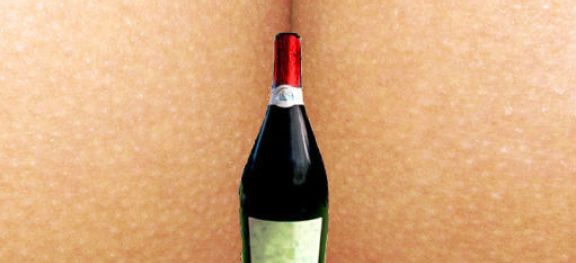The bottom end of sparkling

What do lip balm, bath salts, chocolates, scented candles, tea bags and jam have in common? They’ve all co-opted Prosecco into unlikely product extensions. You can even get Prosecco colonic irrigation kits. The effervesence apparently helps the whole process. They call it fizziotherapy.

Once trumpeted as the preferable alternative to boring old champagne, too much Prosecco has decomposed into something cheap and tasteless. So how has Prosecco become the slut of sparkling, lending its name to anything that can hold liquid?
And if you think that's a bit harsh, you should try fizziotherapy. Besides, which product’s reputation was ever improved by its infusion into a liqueur chocolate? And why do you think the boring old champagne authorities work so ruthlessly to protect their trademark?

As little as 3% Prosecco is apparently enough to give these chocolates their flavouring
The story behind the rise of Prosecco perhaps reveals why it now seems to have become so debased. It starts with the credit crunch in 2008, when the money that had recently seemed so plentiful suddenly disappeared. As banks, stock markets and entire countries faced financial melt-down, frugality became the new normal. In fact, it became positively de rigueur to boast of how little you could spend.
Consequently, champagne was off the menu. At the time, the other best-selling sparkling wine in the UK was Cava, but much of it was a cheap and nasty champagne imitation, especially in supermarkets. Whereas Prosecco offered something new.
Previously scorned for its tank-method fermentation, this became an asset, a point of difference. It was by default sweeter too, which not only differentiated it further from champagne but gave it a broad, easy-drinking appeal. And for the consumer there were two even more pertinent factors.
Firstly, the price was right. It was half the price of branded champagne but twice the price of Cava. Such middle ground is usually the most competitive sector, but in the new climate of belt-tightening it was the perfect niche: not too cheap and not too expensive. Secondly, cocktails were surging in popularity, and the Bellini was one of the easiest to make: peach juice plus Prosecco.
Furthermore, there was an increasing trend for home entertaining, along with liberal scalability of production in its Veneto homeland, and a well-established network of Italian food and wine importers around the world. Even the word was easy to pronounce. It seems that everything was aligning to give Prosecco the perfect opportunity to pop.
And pop it most certainly did, growing from UK sales of one million bottles in 2006 to 66 million ten years later, and predicted to continue to 100 million by 2020.
But such a vertiginous ascent might well be the engineer of Prosecco’s demise – and surely the first horseman of the a-pop-calypse is when it starts flavouring everything from cheese to crisps.

The point is that such overexposure cheapens the brand. Prosecco might still be seen as an affordable treat for the moment, but its reputation is wavering. This recent article found that many top Italian restaurants in American have abandoned Prosecco altogether.
And rivals are standing by with their fingers on the muselet. Cava producers have been working hard on improving quality, even though it meant sacrificing market share in the short term as their prices went up. Their renewed efforts give them a better chance of stealing back market share from Prosecco. And if consumer confidence returns with a vengeance, English sparkling has every opportunity to feed on the UK’s appetite for sparkling wine by offering something more authentic, home-grown and altogether more ambitious than the current flood of Prosecco.
But while I cynically scoff at the ubiquity of Prosecco, millions of others blissfully scoff it up. After all, a Prosecco-only bar has just opened its doors in London. And there are plenty of examples of respectable, premium Prosecco, although their production levels are small by comparison. So is this just a case of professional arrogance?
I wouldn’t begrudge anyone their enjoyment of something, but a large volume of Prosecco has become industrial, soapy froth that does a disservice to its drinkers. It wouldn’t be the first style to fall victim to overambitious expansion, and you can’t blame producers for cashing in – but the net result is a cheapening of the name that will be hard to reverse.
The Prosecco colonic irrigation kit might not really exist – yet – but it seems only a matter of time before Prosecco disappears up its own a*se.
Become a member to view this article and thousands more!
- 15,426 featured articles
- 274,442 wine reviews
- Maps from The World Atlas of Wine, 8th edition (RRP £50)
- The Oxford Companion to Wine, 5th edition (RRP £50)
- Members’ forum
- 15,426 featured articles
- 274,442 wine reviews
- Maps from The World Atlas of Wine, 8th edition (RRP £50)
- The Oxford Companion to Wine, 5th edition (RRP £50)
- Members’ forum
- Commercial use of our Tasting Notes
